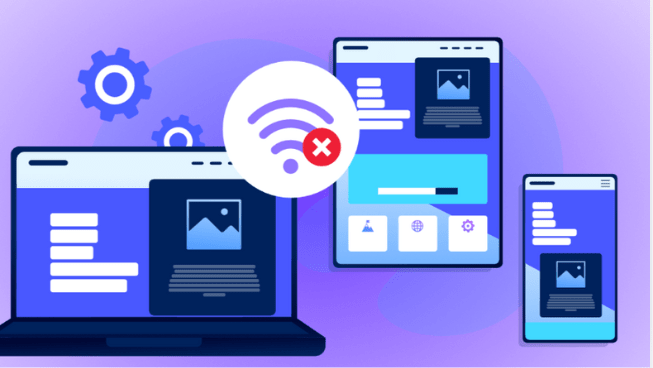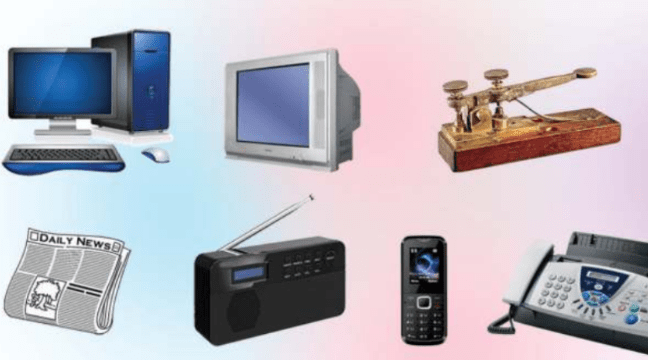In a world where every click is tracked, every message is mined, and every app is watching, a silent rebellion is underway—and it’s gaining serious momentum.
It’s called the offline-only movement. And if you haven’t heard of it yet, buckle up. Because by the time you finish this article, you’ll understand why privacy-first, no-cloud software might just take over the tech world—and why Silicon Valley is secretly terrified.
Let’s uncover why offline-only apps are exploding in popularity, how they protect your freedom, and why this quiet revolution could be the biggest tech trend of the decade.
🕵️♂️ The Surveillance Tech Backlash
For years, we’ve been sold the idea that “the cloud” is convenient, seamless, and futuristic. But in reality? It’s a surveillance minefield.
Every app you use is potentially:
- Logging your location
- Tracking your keystrokes
- Recording your preferences
- Selling your data to advertisers—or worse, governments
With cyberattacks hitting hospitals, banks, and even schools, people are waking up. They’re realizing that the “free” apps they use daily come at a hidden price: their privacy.
That’s why users are now demanding something radical: apps that don’t need the internet at all.
🔌 What Are Offline-Only Apps?
Offline-only apps are exactly what they sound like: software that runs entirely on your device, with no cloud dependency, no server calls, and no data sharing—unless you explicitly allow it.
These apps:
- Don’t require an internet connection
- Store your data locally
- Cannot send anything to third parties
- Often use open-source or end-to-end encryption
Think:
- Note-taking apps that stay on your phone
- Budgeting tools that never touch a server
- Task managers with zero internet access
- Journals, calendars, and writing tools that are 100% offline
And the best part? They’re growing fast.
📈 Why the Offline-Only Trend Is Booming
1. Privacy Is No Longer Optional
Thanks to scandals like:
- Cambridge Analytica
- Pegasus Spyware
- TikTok & Meta data leaks
Users are sick of being watched. Offline apps offer a safe haven—no tracking, no profiling, just functionality.
2. The Remote Work Wave
Post-pandemic, remote workers have flooded the market—and they don’t always have stable internet. Offline tools let them stay productive without being connected 24/7.
3. Digital Wellness & Minimalism
People want to spend less time online, not more. Offline apps support digital detoxing and screen time control—without pushing notifications or stealing focus.
4. Data Sovereignty Laws
Countries like Germany, Switzerland, and India are tightening data protection laws. Offline apps ensure legal compliance and cross-border data safety.
🛡️ Offline Apps = Total Control
When you use an offline-first tool, something incredible happens: you take back control.
- You know where your data is
- You decide when it syncs (if ever)
- You don’t worry about company shutdowns or server outages
- You’re immune to cloud hacks or spying
In a digital landscape filled with uncertainty, breaches, and betrayal, that control is everything.
🌟 Best Offline-Only Apps Right Now (2025)
Here are some privacy-first stars leading the charge:
- Standard Notes – End-to-end encrypted note app that works fully offline
- Obsidian – Local markdown editor with knowledge graph—your data stays with you
- MoneyWallet – Offline personal finance app with no tracking or ads
- Daylio – Mood and habit tracker that requires no internet to function
- Syncthing – A peer-to-peer file sync alternative to Dropbox, with no cloud server
And more are launching every month as demand surges.
🧠 Who’s Driving the Offline-First Movement?
It’s not just privacy activists. The offline boom is being fueled by:
- Developers tired of surveillance capitalism
- Parents looking to protect their children’s data
- Digital nomads working in remote or low-connectivity zones
- Regulators demanding better data protection standards
- And most importantly… everyday users reclaiming autonomy
This isn’t just a tech trend. It’s a philosophical shift.
🏛️ Big Tech’s Silent War Against Offline Software
Here’s the twist: the tech giants hate this movement. Why?
Because they:
- Can’t monetize offline apps
- Can’t collect user data
- Can’t push ads or recommendations
- Can’t feed algorithms or LLMs with your input
That’s why many of them:
- Ban offline apps from app stores
- Push “always-on” permissions
- Disable features without network access
- Design “pseudo-offline” apps that still ping the cloud in the background
In some cases, users have discovered their “offline” apps still sent telemetry data—without consent.
The takeaway? If Big Tech is trying to block it… it’s probably good for you.
⚖️ The Legal and Ethical Implications
Governments are catching on.
Europe:
- GDPR fines are skyrocketing
- Calls to promote local-first tech are growing
US:
- Bills like the American Data Privacy Protection Act (ADPPA) are gaining traction
- States like California and Utah are leading the charge in digital rights
Asia:
- Countries like India are promoting offline educational tools to bridge the rural tech divide
It’s not just ethical—it’s legally smart to go offline.
🌐 Offline Doesn’t Mean Disconnected
Offline apps don’t mean anti-social or isolated. Many tools offer:
- Optional peer-to-peer sync
- Encrypted backups to personal drives
- LAN collaboration
- Bluetooth and Wi-Fi direct file sharing
It’s about intentional connectivity—you choose when to connect, and how.
This is the future of computing: light, private, and on your terms.
💥 The Future: Offline as a Status Symbol?
Strangely, being offline is becoming cool.
- Silicon Valley execs brag about “air-gapped” devices
- Digital wellness influencers promote “offline hours”
- Privacy-first companies use “offline” as a selling point
In a few years, owning a phone that doesn’t need constant connection could be like owning a vintage record player—rare, stylish, and powerful.
✅ Conclusion: The Rebellion Has Begun
The rise of offline-only apps isn’t a passing trend. It’s a quiet revolution, driven by a world finally waking up to the cost of “free” tech.
And while cloud-based tools will never fully disappear, the era of total dependence is coming to an end.
In this new world:
- Privacy isn’t a luxury—it’s a design principle
- Connectivity is a choice—not a requirement
- And your data? It’s finally yours again.
The question is… are you ready to unplug?
❓FAQs: The Offline-Only Software Boom
Q1: Are offline-only apps safer than online ones?
Yes. By avoiding cloud syncing, they reduce exposure to hacking, tracking, and data leaks.
Q2: What happens if I lose my device?
Some apps offer optional encrypted local backups or manual sync to personal cloud storage—but you control it.
Q3: Do offline apps still get updates?
Yes. Most update via traditional app stores or manual installation—but not during use.
Q4: Can businesses use offline apps?
Absolutely. Many industries—like healthcare, defense, and law—are adopting them for data sovereignty.
Q5: Do offline apps work without permissions?
Many of them do. They don’t need location access, internet, or telemetry permissions.
Q6: Will offline-only apps replace cloud apps?
Not entirely—but they’ll coexist, especially in privacy-focused, low-connectivity, or sensitive environments.
Q7: How do I find offline-first apps?
Search terms like “local-first,” “offline-only,” and “open-source privacy apps” on GitHub or privacy forums.



